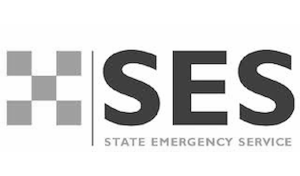
Blog
When It’s Good to Say No – How to Do It
It can be difficult saying ‘no’ especially if the request has come from your superior. None of us want to be known a ‘yes person,’ however, knowing when to refuse an extra task or assignment can be a challenge. Sometimes, you may just accept assignments for fear of losing your job or that others may get ahead of you in the workplace.
Unfortunately, some research points to the fact that staff who say ‘no’ can receive fewer promotion recommendations and are not viewed as team players. So, how can know when it’s good to say ‘no’ and what is the best way to refuse extra work without being labeled as a non-team player?

When It is Good to Say No
There are legitimate occasions in the workplace when you can decline request without feeling bad or having to put up with negative consequences.
Here are some situations when it is wise to say ‘no’:
- there is no way to realistically get the work done without other responsibilities suffering
- it is not possible to organise your other tasks to make room for the new request
- there is someone more suited to the task
How to Say No at Work
Very often the negative consequences of saying ‘no’ in the workplace can be avoided by knowing how to say no.
Liken this to throwing a ball. You can fling a ball with such force that it injures the other person. Or, you could gently throw to ball to make it easier for the other person to catch. So, very often, the results are dependent on you.
Be honest
Usually, honesty is the best policy when it comes to saying ‘no’ at work. Being clear and straightforward can help to avoid any confusion and it lets the other person understand your point of view.
However, you don’t need to go into too many details, especially if the situation doesn’t call for it. A simple ‘no’ without any context can come across as harsh and uncaring. However, mentioning why you have to refuse a request can help the other person accept your point of view.
Speak in person
Many requests in the workplace are sent by email and there are a number of pitfalls when you answer back by email. For example, if your answer is too short, it may come across that you are being obstinate. If your answer is too lengthy, the other person may not have time to read it all or it could be misunderstood.
It is much better to speak to the person face to face to talk things through.
Prioritize your tasks
If the request from your boss is something that he or she feels strongly that you have to do it, but you don’t have the time, ask for help in rescheduling your work. Doing this shows a willingness on your part to be flexible and work along with the goals of the company. It will also help your boss to be more understanding of your situation as they probably have been in the same situation as you are in.
Show appreciation
One way to say ‘no’ to an extra task or assignment is to express your appreciation to the person who made the request. In most cases, the fact you have been asked shows a measure of trust from the other person and you can express this. You could say something like, “Thanks for wanting to entrust me with this. Unfortunately, I can’t do the task this time because…”
Don’t become a ‘no’ person
Remember, that just as no one likes a ‘yes’ person, having the reputation for always saying ‘no’ will not help you climb the corporate ladder. There will always be occasions when you have to make compromises with your time. So, always be willing to accept some tasks to help balance out the times when you have to say ‘no’ to your boss or manager.
Recent Posts
-
Working From Home — Ultimate Security Tips for a Safe Home Office
-
Unexpected Ways Stress Affects Your Body
-
The Worst Mistakes to Make When Working from Home
-
The Undeniable Worst Mistakes to Make in a Meeting
-
The Top 6 Myths About Leadership Debunked
-
The Best Apps for Busy Professionals
-
Is Telecommuting the Answer to Work-Life Balance?
-
The Importance of Career Goals to Boost Success at Work
-
The Shocking Dangers of Workplace Burnout
-
How to Restart Your Positive Emotions
























